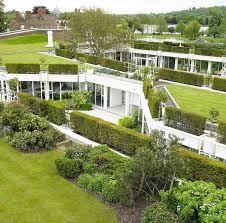The concept of a circular economy is increasingly being integrated into urban planning as cities seek sustainable ways to manage resources, reduce waste, and create resilient communities. The circular economy represents a shift from the traditional linear economy, which follows a ‘take-make-dispose’ model, to a regenerative system where resource input, waste, and emissions are minimized by closing loops through the reuse, repair, refurbishment, and recycling of materials and products.
This holistic approach aims to extend the lifecycle of resources, reduce environmental impacts, and create economic opportunities.

Principles of Circular Economy in Urban Planning
Design Out Waste and Pollution:
- Urban Design: Incorporating waste reduction strategies at the planning stage, such as modular building designs that allow for easy disassembly and reuse of materials.
- Infrastructure: Developing infrastructure for efficient waste management, including recycling facilities and composting systems.
Keep Products and Materials in Use:
- Product Life Extension: Encouraging repair, refurbishment, and remanufacturing industries within urban settings.
- Sharing Economy: Promoting sharing platforms for goods and services, such as bike-sharing, car-sharing, and tool libraries.
Regenerate Natural Systems:
- Green Spaces: Integrating green spaces, urban agriculture, and permaculture to enhance biodiversity and ecosystem services.
- Water Management: Implementing sustainable urban drainage systems (SUDS) to manage stormwater and reduce flooding.
Implementation Strategies
Urban Policy and Governance:
- Regulatory Frameworks: Creating policies that support circular practices, such as incentives for businesses adopting circular models and regulations that mandate recycling and reuse.
- Public Procurement: Using public procurement policies to drive demand for circular products and services.
Innovation and Technology:
- Smart Cities: Leveraging technology and data analytics to optimize resource use, reduce waste, and improve the efficiency of urban systems.
- Materials Innovation: Investing in research and development of sustainable materials that are easier to recycle and have a lower environmental footprint.
Community Engagement and Education:
- Awareness Campaigns: Educating residents and businesses about the benefits of a circular economy and how they can participate.
- Collaborative Platforms: Creating platforms for stakeholders, including government, businesses, and communities, to collaborate on circular economy initiatives.
Case Studies
Amsterdam, Netherlands:
- Circular Amsterdam: The city has adopted a comprehensive strategy to become fully circular by 2050, focusing on construction, organic waste, and consumer goods. Initiatives include the development of circular construction practices and the establishment of a “repair café” where residents can fix household items.
Copenhagen, Denmark:
- Resource and Waste Plan: Copenhagen aims to become a zero-waste city by 2050. The plan includes increasing recycling rates, promoting the use of secondary materials, and creating a circular resource economy for organic waste.
San Francisco, USA:
- Zero Waste by 2020: San Francisco has implemented policies and programs to achieve zero waste, including mandatory recycling and composting, bans on single-use plastics, and initiatives to promote product reuse and repair.
Benefits
Environmental:
- Resource Efficiency: Reduces the extraction of raw materials and lowers the environmental impact of production processes.
- Waste Reduction: Decreases the amount of waste sent to landfills and incinerators, thereby reducing pollution and greenhouse gas emissions.
Economic:
- Job Creation: Generates new employment opportunities in recycling, refurbishment, and remanufacturing sectors.
- Economic Resilience: Reduces dependence on finite resources and enhances the resilience of urban economies by diversifying resource streams.
Social:
- Community Development: Fosters a sense of community through sharing economies and local production.
- Health and Well-being: Improves urban living conditions by reducing pollution and creating green spaces.
Challenges
Economic Viability:
- Initial Costs: High initial investments in new technologies and infrastructure can be a barrier.
- Market Dynamics: Creating demand for circular products and services requires changes in market dynamics and consumer behavior.
Regulatory Barriers:
- Policy Alignment: Ensuring that local, regional, and national policies are aligned to support circular economy initiatives.
- Standardization: Developing standards and certifications for circular products to ensure quality and consistency.
Behavioral Change:
- Public Awareness: Raising awareness and changing mindsets about consumption and waste is a significant challenge.
- Cultural Shifts: Encouraging cultural shifts towards valuing repair, reuse, and shared ownership over new purchases.
Conclusion
Integrating circular economy principles into urban planning is crucial for creating sustainable, resilient, and thriving cities. By rethinking how resources are used and managed, cities can reduce their environmental impact, create economic opportunities, and improve the quality of life for their residents. While challenges exist, the benefits of a circular economy make it a compelling approach for the future of urban development.



